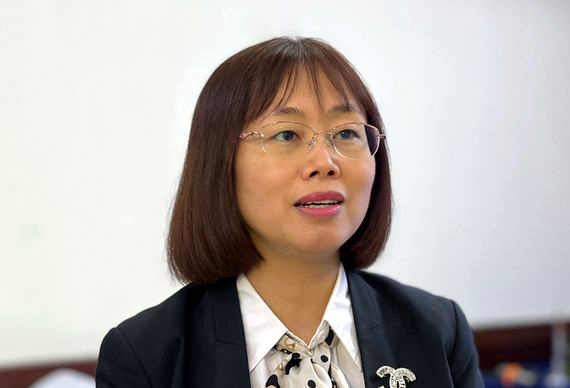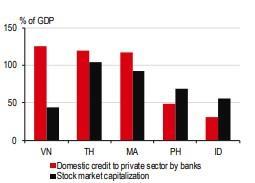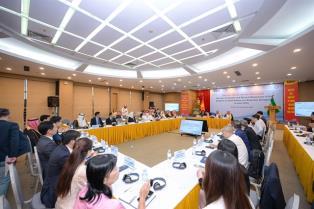Public-private partnerships (PPP) are playing an increasingly vital role in Việt Nam’s tourism industry. The cooperation between businesses and local authorities is creating new momentum for destinations and enhancing the overall competitiveness of Vietnamese tourism. Deputy Director of the Vietnam National Administration of Tourism (VNAT) Nguyễn Thị Hoa Mai spoke to a Việt Nam News reporter about the issue.

Public-private partnerships (PPP) are playing an increasingly vital role in Việt Nam’s tourism industry. The cooperation between businesses and local authorities is creating new momentum for destinations and enhancing the overall competitiveness of Vietnamese tourism.
Deputy Director of the Vietnam National Administration of Tourism (VNAT) Nguyễn Thị Hoa Mai spoke to a Việt Nam News reporter about the issue.
How has Việt Nam recently promoted the strength of public-private partnerships in tourism?
In recent years, a series of events and stimulus programmes, international fairs and digital media campaigns across many platforms have all borne the mark of public-private partnership.
This cooperation has helped expand the tourism market, increase visitor numbers and clearly affirm Việt Nam's global position, contributing to greater recognition of the country’s image worldwide.
We believe that PPP offers many practical benefits, helping to maximise social resources while also motivating businesses and communities to engage more deeply in socio-economic development.
Thanks to these partnerships, tourism businesses can develop a range of products, improve service quality, and enhance competitiveness both at home and abroad.
Tourism is not only a business activity but also a social one, affecting the community and the environment. The role of the State is to protect public interests, while businesses accompany that process by promoting creativity and generating socio-economic efficiency.
Public-private partnerships are an inevitable direction for Việt Nam and the world. Many countries apply this model to promote socio-economic development, including tourism.
In Việt Nam, the Politburo has issued Resolution 08 on developing tourism into a spearhead economic sector.
We think that, in tourism development, in addition to strong direction from the Government and authorities at all levels, there needs to be cooperation from the community, localities, and businesses—especially travel agencies, accommodation companies, and distribution agents.
We assess that the public-private partnership model in Việt Nam is currently being implemented very strongly.
With PPP, we see that the cooperation between businesses and local authorities has created a new driving force for destinations and improved the overall competitiveness of Việt Nam’s tourism.
How do you evaluate this cooperation in helping to develop and promote destinations?
We have promoted tourism with professional expertise, strengthened cooperation with key markets and enhanced communication and promotion.
Currently, not only travel companies but also localities have connected and joined hands with online sales agents such as Agoda, Booking.com and Traveloka.
For example, Đà Nẵng City has cooperated with Traveloka from 2024 to early 2025, launching a stimulus programme with many vouchers on this platform. The result is that the locality has attracted 5.8 million international visitors. Domestic visitors have also shown an upward trend on Traveloka's online platform amid the stimulus package.
In the near future, HCM City will also pilot this model and is expected to officially cooperate with Traveloka in 2026. The goal is to attract more international visitors to Việt Nam, while encouraging domestic travellers to explore more destinations.
Huế has also worked closely with businesses, while Hà Nội has cooperated with airlines to promote destinations. HCM City has applied technology to issue e-vouchers for tourists.
Through online platforms, people can easily search for suitable stimulus programmes to register and experience themselves.
I hope that through these stimulus programmes, the ultimate goal is for people to experience and connect with one another, both exploring and enjoying, thereby relaxing and creating material values for society.
Not only big cities such as Hà Nội, HCM City, Đà Nẵng and Huế, but many localities are also seeking to increase promotion through communication campaigns on tourism platforms such as Agoda, Traveloka and Booking.com.
In the coming time, we will strongly promote public-private cooperation, both to mobilise maximum social resources for tourism development and to demonstrate the role of State management through policy mechanisms. This will create a platform that ensures benefits for three parties: businesses, the State, and the people through stimulus programmes.
From now until the end of the year, Việt Nam’s target set by the Government is to welcome 25 million international visitors. Therefore, the tourism industry must attract nearly 2 million visitors per month to meet this goal. What has VNAT specifically planned to make a breakthrough in the last three months of the year?
We are developing a long-term strategy to submit to the Government and the Prime Minister, and we also plan to implement short-term programmes to accelerate progress in the final three months of the year.
Currently, in addition to stimulus programmes and coordination with international platforms to help localities and businesses increase connections with partners, enhance the promotion of Vietnamese destinations and especially improve sales efficiency, in the long term we will advise on policy mechanisms to create a clear legal framework, making conditions more favourable for tourists to visit Việt Nam. For example, we propose to maintain visa relaxation policies and improve the quality of service infrastructure.
In addition, we will promote programmes to strengthen the image of Vietnamese tourism in key markets, along with traditional ones, aiming to achieve double-digit growth as before the COVID-19 pandemic.
For potential markets with high spending and long-term stays, we are also planning to organise promotional programmes. For example, we recently went to India to hold business-to-business (B2B) meetings, connect with local governments and promote tourism through cinema. That is also an innovative solution to promote tourism in the time ahead. — VNS





